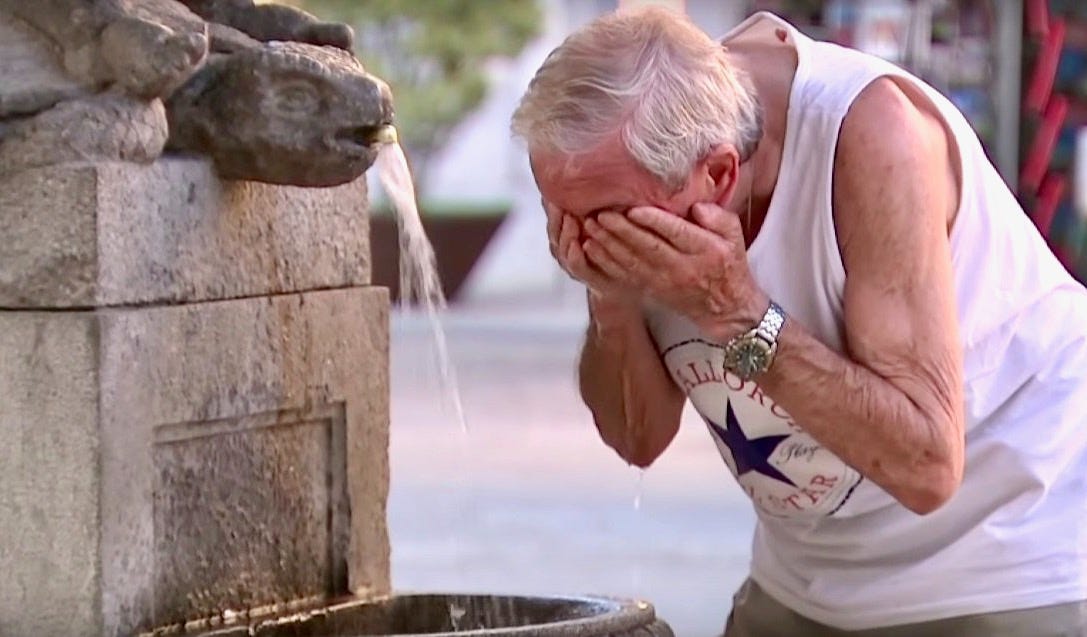Need-to-Know: The impacts of severe heat have been badly underestimated.
The impacts of severe heat have been badly underestimated by pretty well everyone.
Why?
One big reason is that there hadn’t been any scientific experiments testing the impacts of heat on human health until very recently. The results are a bit shocking.
Let me explain how heat affects us all.
Our body’s sweat to cool off, but, because water evaporates slower in more humid conditions, it is harder to cool down when it is humid. If we can’t cool off, our body’s core temperature rises which causes our hearts to work harder to pump more blood to the skin to dissipate the heat. Should our core temperature continue to rise, our internal organs can be damaged and death can occur within a few hours.
It had long been thought that the physiological limit for human survival was a wet-bulb temperature of 35C (95 F) lasting five or more hours, even when at rest in the shade. Wet-bulb temperature (WBT) takes temperature, humidity, wind speed, and other variables into account.
WBT is more accurate but similar to the Heat Index, often shown in weather reports as the “feels like” or “real feel” temperature.
Here’s some WBT examples:
Temp 30C; humidity 70% = WBT 25.5C
40C /70% = WBT 35C ( 104F/70% = WBT 95F)
40C/35% = WBT 27.3C
50C/35% = WBT 35C
(A basic WBT calculator.)
Many health authorities use a WBT of 32C, as the lower limit of the danger zone for human health.
However, the first-ever lab study using human volunteers to test the impacts of heat on health, found that cardiovascular strain in healthy young adults began far lower at a WBT of 29.4 degrees C. This roughly equates to a temperature of 35C (95F) and 65% humidity.
Remember, these are healthy young adults being tested.
Need-to-Know: The true danger zone for heat and humidity is far lower
During slow walking cardiovascular strain increased at a WBT of 27 C and the body’s core temperature started to heat up at a WBT of 28C.
Prolonged exposure to these levels of heat and humidity may become dire for vulnerable populations such as the elderly, and those with heart disease and other chronic conditions, the study concluded.
Even in dry and hot environments, there is a limit to how much the body can sweat and stay cool enough. For example, a WBT of 27C (45C with 19% humidity) results in cardiovascular strain for a young person while at rest.
Need-to-Know: Dangerous levels of heat are no longer rare.
These dangerous levels of extreme heat are happening far more often than is widely recognized.
During the heat waves in South Asia in May and June 2022, Jacobabad, Pakistan, recorded a WBT of 33.6C, and Delhi topped that. Thousands of people died but it is hard to get accurate numbers on heat-related deaths. For context, it took a year of detailed analysis to get a more accurate estimate that nearly 62,000 people died of heat-related deaths resulting from Europe’s heat waves of 2022.
Texas and the southwest U.S. have been under a heat dome the last few weeks with WBTs reaching 30C. That’s well into the danger zone for many people. (See the US National Weather Service WBT page for daily forecasts.)
Canada uses a Humidex scale, where a reading of 40 or more is dangerous for many people. A temp of 30C and humidity of 65% = 40 on the humidex scale. A temp of 36C with 30% humidity also = 40. (See humidex scale.)
Need-to-Know: Extreme heat and extremes in humidity are increasing
Extreme heat-humidity combinations doubled between 1979 and 2017 globally, according to a study in Science Advances that found thousands of such combinations by looking at the hourly data from nearly 8,000 weather stations. The study defined a WBT of 28C or higher as extreme.
Extreme heat-humidity events occurred repeatedly in much of India, Bangladesh and Pakistan; northwestern Australia; and along the coasts of the Red Sea and Mexico’s Gulf of California during the study period. Less frequent extremes were also found in parts of southeast Asia, southern China, subtropical Africa and the Caribbean.
Need-to-Know: Fatal levels of heat due to climate change are already here
Along the Persian Gulf, researchers spotted more than a dozen potentially fatal outbreaks of WBT 33C to 35C since the year 2000. Fortunately, these were localized and only lasted an hour or two. Such extremes had not thought to be possible until late in this century.
Parts of the southeastern United States saw a WBT of 31C (equivalent to 125F on the “real feel” heat index) mainly near the Gulf Coast in recent years. Heat-related illnesses already kill more U.S. residents than any other weather-related hazard including cold, hurricanes or floods.
Need-to-Know: Extreme heat is a growing health and economic risk
If people are increasingly forced indoors for longer periods, farming, commerce and other activities could potentially grind to a halt, ravaging economies.
Extreme heat puts health care systems under enormous pressure and dramatically increases energy use for cooling. Today, 10% of global energy use is for cooling.
What happens if there is a power outage during a heat wave?
A 48-hour blackout in the city of Phoenix during one of its regular heatwaves would mean nearly 800,000 people—more than half the city’s population—would need emergency medical care for heat stroke and other illnesses.
In addition, nearly 13,000 people would die from heat-related illness, according to a recent hypothetical case study.
FYI: Major blackouts in the US have doubled since 2015.
No one wants to think about this nightmare scenario but it is far from unrealistic.
Need-to-Know: We all need to be aware of the dangers from rising heat levels
There’s a lot more to this topic. I hope this has been helpful.
Until next time, be safe.
Stephen





